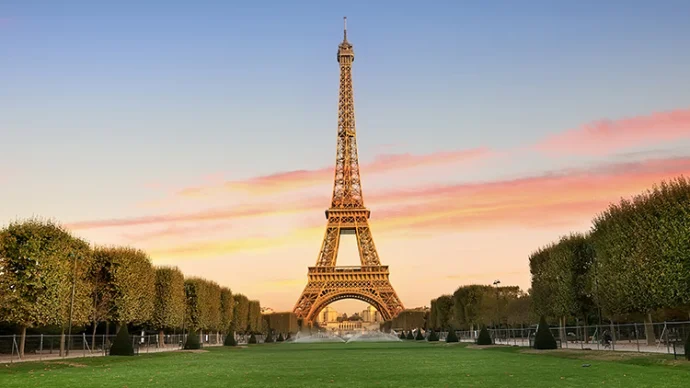Devil’s Island
French Guiana, French Guiana, France
Devil’s Island penal colony in French Guiana was home, at one time or another, to 80,000 of France’s worst criminals, the vast majority of whom never returned home. Made famous in Henri Charrière’s ‘Papillon’, prisoners endured a living death dubbed the ‘dry guillotine’.

About Devil’s Island
Devil’s Island was a French penal colony that operated in the 19th and 20th century in the Salvation Islands of French Guiana.
Devil’s Island history
Devil’s Island in French Guiana was perhaps the most brutal, feared and horrific penal colony in the history of incarceration. The government of Emperor Napoleon III opened the colony, made up of several small islands on the mainland and offshore known as Île de Salut, in 1852 and it was synonymous with horrendous cruelty.
The prison was intended for the exile of French political prisoners (but was extended to house hardened thieves and murderers) and was made up of Île Royale, the reception centre where 2,000 ‘thin-lipped, hollow-eyed’ prisoners who, Dante-esque, had long since given up all hope. Île Saint-Joseph was known as ‘Reclusion’, or the place where prisoners were sent to solitary confinement for escape attempts and offences in total silence and virtual darkness, some for up to five years.
Île du Diable was for political prisoners including Captain Alfred Dreyfus who was wrongly accused of selling secrets to the Germans in 1895 and the island’s most celebrated inmates, Henri Charriere, otherwise known as Papillon and forger Louis Dega.
Around 80,000 of France’s worst criminals who took the gruelling 15-day boat trip from Marseilles in below-deck cages passed through Devil’s Island, the vast majority of whom never returned home. Huge numbers died of disease, starvation and absolute brutality and those who completed their sentences were banished from France, forced to stay on the island. Later in the operational timeline prisoners were allowed back to the motherland but it’s estimated that less than 2,000 returned alive.
Spoken of in reverential tones by the French underworld, Devil’s Island was dubbed the ‘green hell’ and in a 1938 book by inmate René Belbenoît who managed to escape to the USA, he called Devil’s Island the ‘dry guillotine’ because prisoners endured a living death.
The French stopped sending prisoners to the islands in 1938 and the ‘toughest penal colony of all time’ closed permanently in 1953.
Devil’s Island today
Today, tours to the islands are available by boat from Kourou on the mainland although Devil’s Island remains closed to the public (but visible from the boats). The prison buildings on the other islands have been converted into museums. Since these tourism facilities have been added, the islands now receive more than 50,000 tourists each year.
Kourou Devil’s Island has become a popular prison icon in film and literature. The infamous Dreyfus Affair detailing the French captain’s unjust conviction has been retold in literature, film, and on stage. Escape attempts from the “Green Hell” were common and mostly unsuccessful. Henri Charrière, the author of Papillon, later made into a famous movie, tells the story of one man’s efforts to get away.
The Salvation Islands are separated by vicious tides and dangerous currents. The natural environment made the islands an ideal prison site. Since rocky shores and rough seas made Devil’s Island inaccessible, there was once a cable system from St. Joseph, which was 200 meters away, for goods and people.
Lush growth, palm trees, and forests covered the islands, obscuring the water beyond. Left to nature, the tropical growth covered most of the ruins of the infamous penal colony.
Getting to Devil’s Island
The Salvation Islands, including Devil’s Island, lie roughly 8 kilometres of the coast from Kourou in French Guiana. The only way to and from the islands had always been by boat, and that hasn’t changed to this day.
In Kourou, about an hour drive from Cayenne on highway N1, you can catch a boat to Île St. Joseph and Île Royale. Access to Devil’s Island, where the political convicts were held, is strictly forbidden. It is recommended to take a tour, with information usually available in both French and English, to see the ruins of the other islands in a half-day or day trip.
Given the hot and humid climate, it is advised to bring water, sunscreen, hats, and appropriate clothing.
Featured In

10 Historic Sites You Should Not Miss in 2023
Need a bucket list for 2023? Explore some of the most amazing historic sites with this list.

Famous Prisons
Discover the most famous prisons in the world, from Alcatraz to the Devil's Island, where you can follow in the footsteps of the world’s most high profile prisoners in these notorious penitentiaries.

France Historic Sites
From towering imposing castles to First World War trenches, ancient Roman ruins to historic Revolutionary sites, France is brimming with relics of its esteemed and turbulent history. Here's our pick of 10 of the very best attractions in the country.




















